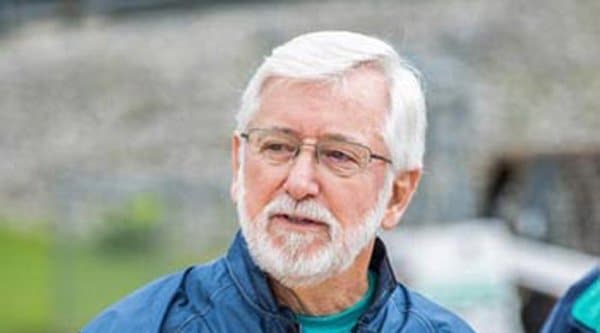Minibytes by Al Allen
Putting it simply, most oils float on water. Well…, a few don’t; some float for a while; and many disappear with time due to evaporation, decomposition, and/or natural mixing within the water column. So far my discussions have not been specific to any one type of oil (i.e., crude oil, diesel, gasoline, lubricating oils, etc.), and I have not attempted to explain how floating oil behavior and cleanup techniques vary with fresh water, sea water, the presence of ice, etc. If I am lucky, and can manage to blog for another 10 years I might just get to about half of these issues! Of course, at “90” I’d probably be more concerned with what might get clogged than blogged. So for now, let’s move quickly to another important lesson learned involving oil spills. That is, the “Sinking” of oil and how such sinking actually involves all oils and all types of water at some point, while placing significant constraints on the time available for response, the selection of meaningful tactics, and special consideration of potential environmental impacts below the water’s surface.
In my previous blog (#3), I covered some of the oil spill techniques and inefficiencies observed during the 1969 blowout off Santa Barbara, California. Some of the lessons learned about booming and the skimming of floating oil during that event were quickly and painfully recognized. One lesson, however, seemed as illusive and slippery to grasp as the oil itself – the tendency for oil to sink, either as a natural process, or worse, from the deliberate attempt to put the oil out of sight and therefore, perhaps, out of mind! For weeks following the blowout, there were widespread nearshore and shoreline cleanup efforts to broadcast straw and other materials onto floating and stranded oil. While oil can adhere to and/or absorb into hundreds of natural and manmade products (straw, hay, hair, peat moss, etc.), the recovery of these oily products is often a difficult, labor-intensive effort. And, if not done quickly such oil-soaked materials often sink, especially when they’ve come into contact with beach sand or some other particulates. I witnessed the sinking of oil as it drifted into brown muddy water exiting the mouths of rivers near Santa Barbara. Curious about the oil’s subsurface distribution, I made dives to examine the sea bed in those regions. One did not have to be an expert marine biologist to see and acknowledge the significant impact of vast stretches of oily sediments and materials on the bottom. Some of the oily layers were several inches thick with the consistency of mayonnaise.
For quite some time after the spill there was talk about the use of sinking agents to treat floating oil. Finding it unbelievable that anyone would deliberately sink oil, I started thinking about ways to study this idea and hopefully build an awareness of the potential for serious impacts. A very good friend of mine, who by the way was a fellow-diver during our oil seep studies, agreed that we should set a goal to better understand the sinking of oil. This good friend (and Best Man at my wedding!) is Dr. Roger S. Schlueter (RSS), now retired in Santa Barbara. He, by the way, is the diver/pilot I referred to in my previous blog (#3) where innocent spill volume estimates for the blowout had already gotten us in trouble with some groups. Well…, to make a long story very short, RSS and I brought another good friend and “Seep Creep”, Leland E. Fausak (LEF) into our plan, and over a period of about 3 years we accomplished the following:
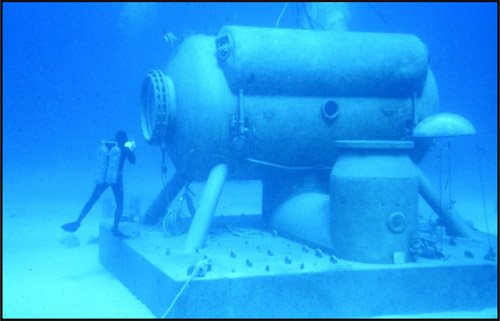
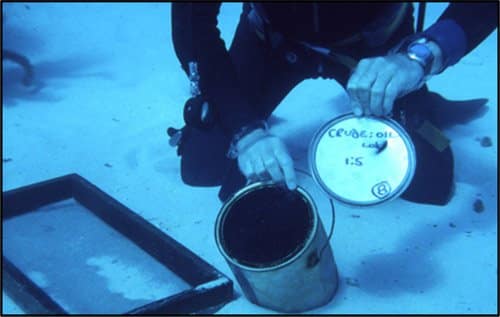
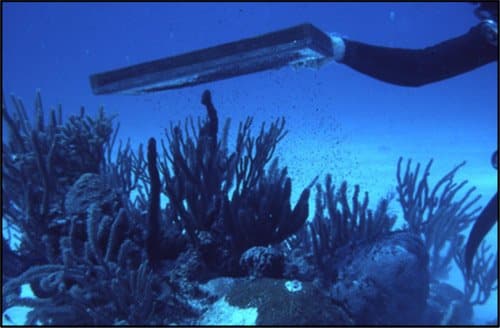
- A plan was developed for the study of several oils and sinking agents using a seafloor habitat so that we could live in and work from that habitat, conducting experiments on the fate, behavior and impacts of sunken oil over an extended period of at least a week.
- We secured approval and funding from the National Oceanic and Atmospheric Administration (NOAA) and the Environmental Protection Agency EPA) for the three of us to spend a week in Hydro-Lab, a subsea research habitat in 50 feet of water near Grand Bahama Island (Photo #1).
- With the support of our employer at that time, Marconsult, Inc., we completed an advanced diver-training course run by the University of Southern California at Catalina Island, giving us the opportunity to study and prepare for the tasks and conditions we’d face during a 7-day saturation dive.
- A week-long stay in Hydro-Lab was completed in January, 1973, during which we conducted several evaluations of the properties, transport and degradation of several deliberately sunken oils, and tested procedures that could be used to determine the effects of sunken oil on benthic (bottom-dwelling) organisms (Photos #2 & #3). This effort became Phase I, and the results were used to plan for a second saturation dive a year later.
- Phase II was approved and funded once again by NOAA with support from the Marine Services Division of Dames & Moore in May, 1974 involving lessons learned during Phase I. Phase II, also at Hydro-Lab, focused on physiological and behavioral responses of marine organisms to submerged oil. Studies included natural habitat alterations, forced stress through direct association with oil, and oil degradation.
The observations and results of these Hydro-Lab studies were presented at the Offshore Technology Conference (OTC) in Houston (May, 1974); live communications, including a video of our experiments, were established between the divers in Hydro-Lab (Phase II) and attendees at OTC; and reports were submitted in the Hydro-Lab Journal, a Bulletin of the Hydro-Lab Underwater Research Program, Freeport, Grand Bahama Island. Study results submitted to the funding organizations are too lengthy to present in this blog; however, the research conducted at Hydro-Lab provided basic physicochemical and operational information that confirmed the value of prolonged seafloor observations of sunken oil. Divers, working for many hours each day could monitor, sample and evaluate the fate, behavior and impacts of oil on benthic and epibenthic plants and animals. Decompression from prolonged exposure to pressure at a 50-ft depth need only be conducted once, lasting 14 hours at the end of the dive. It was possible to simulate some of the conditions and dosages that might result from natural and/or deliberate exposures of oil reaching the seabed after a spill. The potential for sunken oil to impact plants and animals, especially tiny organisms (infauna) within bottom sediments, could be observed and studied up close.
We noted that very little degradation of the sunken oil took place within the 1-week exposures of oil on the seabed, and oil losses of typically 20% or less occurred with oils separating from sediments and commercially available sinking agents. The persistence of the oil and potential impacts on the seabed and coral knolls, even with relatively light concentrations, led to plans for future experiments involving higher dosages and longer exposures. While the lack of funding for such experiments prevented further oil impact studies of this nature, enough was learned and passed on to responders, the public and regulators to eventually help ban the use of sinking agents on oil spills, and to tighten the standards by which even sorbents and other treating agents (manmade or natural) could be used. Following the Hydro-Lab experiments, I had the opportunity to witness dozens of major oil releases to the sea under a broad range of conditions. Those experiences confirmed my belief that every effort should be made to keep oil from reaching shore, and from making contact with the diverse, often abundant and most sensitive life forms near, on and below the seabed. As I continue to address the pros and cons of various spill response options, lessons learned, etc., I hope that the tradeoffs associated with each option become a bit clearer, helping to stimulate dialogue regarding meaningful guidelines and regulations for the use of those options.
In closing, I just have to confess that the Hydro-Lab experience was not all work and worry about the future of critters on the seafloor. Shortly after arriving at the Hydro-Lab habitat, we discovered some rather unique constraints. Living in such tight quarters meant that the lab’s occupants should make every effort to keep all personal emissions (vapors, liquids & solids) outside! While diet was easily controlled by our support team, the elimination of by-products was to be conducted in the same manner as other natural critters of the sea. This took some practice! Once agreeing that NO PHOTOS would be permitted during such activity, we each became quite skilled at swimming quickly (usually naked) to a favorite, private hiding spot behind a coral knoll away from the habitat. All became reasonably routine until one afternoon the peace and quiet within the habitat was abruptly broken by the screeching word choices (#@%!*$#) of Dr. RSS as he burst up through the entry port of the habitat, looking like he had been chased by a shark. His garbled words soon revealed that halfway through his “mission”, he had become the main attraction of a group of unannounced, visiting divers from the mainland. To this day, I still derive great pleasure in visualizing that class of divers, watching a panicky, human-like life-form, dressed only in the latest face mask and SCUBA tank, scrambling to get to the habitat, while leaving a strange trail of…, let’s say, debris, behind. Surely, those diving students got a quick lesson on how to breathe from a regulator while bursting out in laughter!
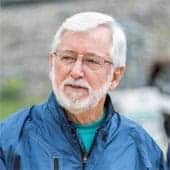
Alan A. Allen has over five decades of experience as a technical advisor and field supervisor involving hundreds of oil spills around the world. Al is recognized as a leading consultant and trainer involving oil spill surveillance and spotting techniques, the application of chemical dispersants, and the containment, recovery and/or combustion of spilled oil under arctic and sub-arctic conditions.
Copyright© 2018, Al Allen. Unauthorized use and/or duplication of this material without express and written permission from this blog’s author is prohibited.
